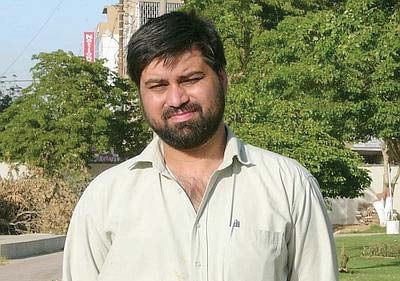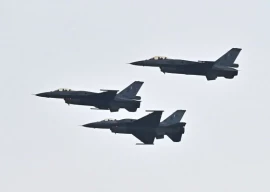
The 146-page report gives page after page of recommendations and proposals on how to fix the “systemic causes of tension between agencies and the media.” It even suggests “practical steps” about making the press and agencies law-abiding and calls for a human rights ombudsman. However, despite six months of painstaking work that included 23 formal meetings and examinations of no less than 41 witnesses, apart from access to Shahzad’s 33,000 emails, even the motive behind the murder could not be conclusively drawn.
The commission comprised two judges, Supreme Court Justice Mian Saqib Nisar, who also chaired the Commission and Chief Justice Federal Shariat Court Justice Agha Rafiq Ahmed Khan; two senior police officers – Inspector General Police Punjab Javed Iqbal and Inspector General Islamabad Police Bani Amin Khan; and one journalist, President Pakistan Federal Union of Journalists Pervaiz Shaukat.
Yet, about the possible reasons behind the brutal killing of the journalist, all they could come up with was the conclusion that “in all likelihood, the motive behind the incident was provided by the writings of Saleem. What is not so clear is the question of who had that motive and actually acted upon it.”
In fact, deep in the report, the commission says that Hamza Ameer, the brother-in-law and complainant in the case, and Anita Saleem, Shahzad’s widow, “were the two most important persons who should have indicated the motive.”
A beeline of journalists and prominent personalities had met members of the commission, including the Dawn CEO Hameed Haroon, Ali Dayan of Human Rights Watch, Najam Sethi, Nusrat Javed, Hamid Mir, Absar Alam, Umar Cheema, Matiullah Jan, Zahid Hussain, Jugnoo Moshin, Nasim Zehra, Imtiaz Alam and Qamarul Munir Yousafzai. At least 13 of them either filed their statements in writing or appeared before the Commission to make statements.
Many of them gave testimonies to the effect that intelligence agencies, especially the ISI personnel harass and sometimes even threaten journalists. Even though the commission took note of the alleged culture of threats, it also could not ignore the possibility that theoretically an imposter posing as agency man could have also issued the threats.
However, when it came to pointing out the same lack of authenticity in the alleged recording of a wiretapped conversation between two al Qaeda operatives, in which they supposedly expressed satisfaction over Saleem’s death, the report keeps mum.
Interestingly, the two intelligence agencies, the Military Intelligence and Intelligence Bureau were not questioned further after they had written to the commission that they had no nexus with the incident.
The ISI, which the report says “bore the brunt of blame right from the day one,” was made to answer the concerns. Brigadier Zahid Mehmood Khan, Sector Headquarter Central Islamabad, contested all allegations.
ISI’s alibi
Brigadier Khan gave a written statement that had “Saleem been threatened or coerced, he would have broken all contacts and refused to interact anymore with the ISI, something he did not do.”
In fact, the official said, Shahzad had himself asked to have a cup of tea, and other rendezvous, with the same officials that, he alleged, had threatened him in the past. ISI says the last telephonic interaction with Shahzad took place on May 2011, soon after the US operation in Abbottabad in which he was told their DG had been wrongly quoted as saying they were hands-in-glove in the OBL raid.
It even put on the record a telephonic conversation of renowned television personaility Hamid Mir with ISI in which “he condemns Saleem Shahzad being a dubious case, [and] laments Americans for their extraordinary interest in this case.”
In their testimonies before the commission, the ISI build the case that Shahzad was in fact killed by al Qaeda, specifically the Ilyas Kashmiri group since he was increasingly revealing their strategies and assets in his articles.
“The individual named Nawaz Khan, an important militant of the Ilyas Kashmiri (al Qaeda) network, is detained in Adiala Jail on the charges of abduction for fund generation for terrorists and murder. He was in contact with Saleem,” the ISI statement said. “After Saleem’s abduction and murder, while discussing the matter with a front man of the Ilyas Kashmiri group, Nawaz expressed praise for Saleem, but Ilyas Kashmiri’s front man cursed Saleem for the damage that he had done to their network and remarked that a bad man had only met his fate. This, according to the statement of Brigadier Zahid Mehmood Khan of ISI, speaks volumes of the Ilyas Kashmiri group’s enmity with Saleem and provides evidence for al Qaeda’s possible involvement,” the report added.
The brigadier further said “if he was a man of intellectual integrity, and his writings were based on acquired intelligence through his contacts, then obviously he could be considered a great threat to al Qaeda when he dared and promised to expose strategic assets of the terrorist organisation in his article on Mehran Base attack”.
Defaming Shahzad
In an effort to defame the journalist as a possible American spy agent, the ISI statement to the commission said “Why in this case [after Saleem’s murder] from President Obama to every man worth a name in the US felt disturbed. Was he a pawn who could be used at appropriate time to further use the US objectives and create a wedge between establishment and other segments of society?”
Brigadier Zahid also termed Saleem’s article about Afghan Taliban leader Mullah Baradar’s mysterious release, as fake and frivolous.
He categorically denied that the book and writings of Saleem in any way has caused any grievance to the establishment or agencies, and in this context deposed: “I do not think that most of the articles written by Saleem Shahzad were against the national interest, rather those exposed al Qaeda and Taliban; qua their way of working and even their entering into Armed Forces and the Navy. This is particularly so envisaged by his article on ‘Mehran Base.’”
Also no defamation of a journalist can be complete unless he is terms as a possible Indian agent.
“Though I do not have any concrete evidence, but Saleem Shahzad in my presence stated that he was approached by Indian Intelligence Agency (RAW) and now he has to present a paper in UK on which he wanted the input of ISI. He also stated that he is in contact with the intelligence agency in UK. I do not remember the exact date of this meeting, but perhaps it was in the month of October, 2010,” the ISI official said.
Denying threats
Also, when ISI’s Rear Admiral Adnan Nazir was asked whether he had in fact threatened Saleem, which the slain journalist had also mentioned in his email to him, Hameed Haroon and Ali Dayan, he said: “it is correct that the above quotation is a part of this e-mail. I did not respond to this e-mail. Though I found that the quotation portion of the e-mail was wrong and false, but I did not find it expedient to respond”.
ISI’s Commodore Khalid Pervaiz said Shahzad’s article in which he said that the terrorists involved in the Mumbai attacks were from PNS Iqbal, which is a naval base, and the boats were also provided by PNS team was totally incorrect, frivolous and baseless. Commodore Pervaiz, who later took charge of PNS Mehran, Karachi that was attacked in 2011, said that he came to know about Shahzad’s explosive article about the issue much later. He said he was very busy in connection with the Mehran Base incident and had no chance or occasion to even read that article. On a further question, he said: “I cannot say whether it was [a] false or [a] correct story because I had never read it … I cannot say if the story is in the national interest or otherwise because I have not read it even so far”. He categorically refuted having threatened Saleem as being imputed by Mr Hameed Haroon or mentioned in the e-mail sent by Saleem to Tony.
In the end, the commission’s report cites lack of ‘substantive piece of evidence’ to pin point the murder to ISI officials. “It does not allow us to safely conclude that the ISI was the culprit behind this incident.”
Published in The Express Tribune, January 14th, 2012.




1719211536-0/BeFunky-collage-(81)1719211536-0-165x106.webp)


















COMMENTS
Comments are moderated and generally will be posted if they are on-topic and not abusive.
For more information, please see our Comments FAQ